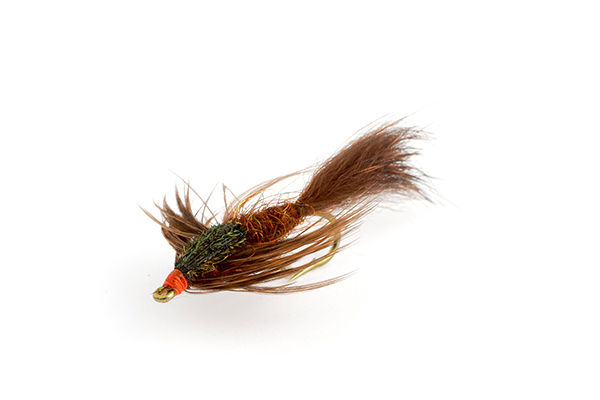Un article de Jay Zimmerman sur les 15 meilleures mouches à carpe.
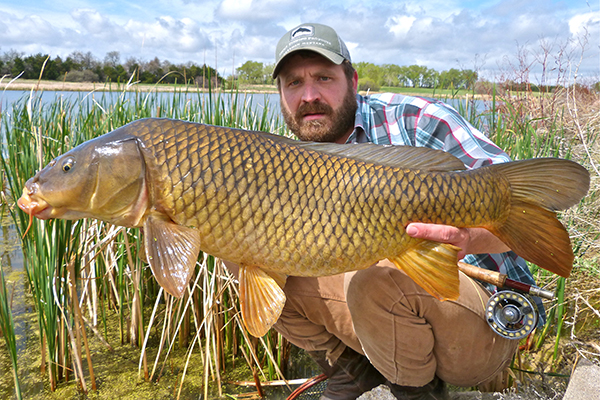
The author Jay Zimmerman with a nice carp (photo by Erin Block).
It is difficult to stereotype an intelligent species. Carp have a longer memory and a better ability to learn than most fish we fly anglers are accustomed to. I will never profess to know the best flies and best approach to fool the carp in your home waters, but these 15 will give you a solid head start. All carp act differently and it is up to you to do the legwork and homework it takes to learn your carp. As you explore your home water, always keep in mind what aquatic environment the carp are living in, the water temperature, the weather, what they are eating and how much human pressure they receive.
The Environment—Carp are very much products of their environment, just as we carp anglers become products of our carp's behavior. It has been fascinating to watch the carp craze spread across the country and see how different people, living in different places, have approached the game—both in angling and in fly tying. I have seen the carp culture expand, diversify and begin to evolve into very different styles, all based on the environment that the local carp are found.
Great Lakes carpers are those anglers who have focused their attention on the carp that inhabit the five massive "inland seas" on our eastern border with Canada. This style of carp fishing is the most like saltwater fly fishing in that it calls for reliable boats, poling platforms and heavy rods. The carp are big, migratory and very predatory. For the fly tier, this translates to larger, heavier flies such as Goby and crayfish patterns that sink fast and can get the attention of a large carp that is traveling a long ways. River carp anglers are those who have become as common a sight on their favorite river as a great blue heron. It could be the Columbia River on the northwest coast, a Missouri River tributary or the South Platte in downtown Denver, the flies and tactics become somewhat similar and transferable. River carp flies tend to be much smaller than the Great Lakes patterns, but do not scrimp on weight—they need to be able to fight currents and get down to where the fish are feeding. Small freshwater clams and different species of aquatic worms are very prevalent in the river carpers tying arsenal.
The high, arid plains around the Rocky Mountains where water rights have caused more fistfights than oil or women ever will are also home to carp. Almost every trickle of water that comes out of the mountains is dammed and captured before it can get too far. These reservoirs provide a unique environment for carp and carp anglers. The flies favored by these reservoir carp anglers usually lack great anatomical detail, and tend to be darker in color than clear-water carp flies, because the water is usually slightly muddy. Vague leech imitations and dark-colored crayfish patterns are preferred.
Another distinctly different type of carp fishery is often found in the eastern United States and those who partake have become adept at the camouflage and finesse needed to successfully hunt carp in the clear, weedy ponds and canals of their home states. These situations call for more damsel and dragonfly nymphs tied lighter, to land soft and have more detail.
Forage—The forage that most carp fly patterns are modeled after are crayfish, leeches and nymphal stages of some of the larger aquatic insects (usually damselflies or dragonflies). Some of these imitations can be quite detailed and realistic ties, while others are pure suggestions of something a carp deems edible. Be it super realistic or ultra impressionistic, the two most important characteristics of any carp fly is the same—it must act alive when wet and be of the proper weight for the water the fly is being used. Do not get too hung up on what the carp are actually feeding on, concentrate more on if the carp is feeding and how the carp is feeding. As a rule, a hungry carp has a better chance of eating your fly than one that is not feeding. This may sound like fishing advice from Yogi Berra, but the gist of the advice is sound. It is convenient to suggest that an angler should be sure to "know the forage" in order to have success, but that is much easier said than done. An angler usually has to make general assumptions and choose flies based on that alone.

Erin Block hooked up on carpflats (photo by Jay Zimmerman).
Pressure—All fish react to human pressure, even the dumb ones. Pressure has the most adverse effects on carp, because they have long memories and a high IQ. This can manifest itself in a couple of different ways. If the body of potential carp water is super public, as in "community park public" with lots of foot traffic, dog walking, children screaming, sticks, balls and disk golf . . . then you can bet the carp have patterned the people and are only active in the early mornings, right at dusk and at night. These types of places usually attract many bait fishermen, who may have no interest in taking a "lowly" carp home to eat (they are there for the catfish?) but have no qualms with chucking a weighted string of hooks at a ten pound carp and trying to snag it if it makes the mistake of swimming too close to the motley collection of forked sticks and bait buckets. One bow fishermen in your neighborhood can also seriously put the spook in the local carp. Carp are still considered an invasive "trash" fish and there are those who make legal sport of this. Any of this interaction with humans makes carp very leery of any movement on the bank of the lake. Wariness in a carps behavior does not directly affect what they are willing to eat, but being conscious of the mood of the carp will dictate how you dress (does Realtree make fishing shirts?), how quickly you move and how long and careful your casts need to be. You may find other bodies of water that are out of easy reach of the masses, but still receive a fair amount of fly-fishing pressure. These areas will instill a selective fly wariness in some of the carp. You may make a perfect cast, the fish sees some movement in the mud and swoops in for the eat . . . but freaks out as soon as it sees and recognizes your fly. If you have this happen, change up material colors on your favorite fly, or switch patterns entirely.
The Flies
Swimming Nymph—Bob Clouser
Swimming Nymph—Bob Clouser is best known for his groundbreaking streamer pattern the Clouser Deep Minnow, a streamer created for smallmouth bass on the Susquehanna, his home river in Pennsylvania—the Clouser Swimming Nymph he tied later. A book was published in Boulder, Colorado in 1997 co-authored by Barry Reynolds called Carp on the Fly. This book became a sort of rough doctrine for the carp revolution and the fly that was the chosen child of the revolution was Bob Clouser's little swimming nymph. "When [we] speak of this fly, it is almost with religious fervor. This is THE fly, our #1 producer," Barry wrote.

Near 'Nuff Crayfish
Dave Whitlock has spent most of his fishing life in and around the Arkansas Ozarks and his writings have appeared regularly in many sporting publications.At one time Dave had over thirty of his signature fly patterns being tied commercially by Umpqua Feather Merchants— many of these have become household names. One of these flies is the Near 'Nuff Crayfish. This crayfish pattern was first introduced commercially in 1996 and has maintained the rank of "best" or "most realistic" of any crayfish patterns tied before or since.
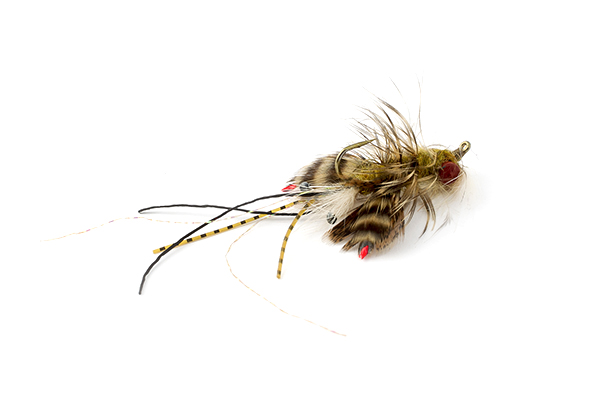
Headstand
Lance Egan grew up fishing in and around Salt Lake City, Utah and cut his teeth on carp swimming in Pineview Reservoir, Willard Bay Reservoir and the Bear River. Although the Headstand carp fly was born in Utah it quickly spread across state lines, popping up in fly shops in almost everywhere. It is a very effective fly and is best fished to tailing carp that are relatively stationary, or to wary fish that are slinking around in shallow, clear water looking for food. The Headstand is tied on a curved hook, designed to rest on the bottom and be gently twitched by the angler; it is not a fly designed for cruising or faster-moving fish.
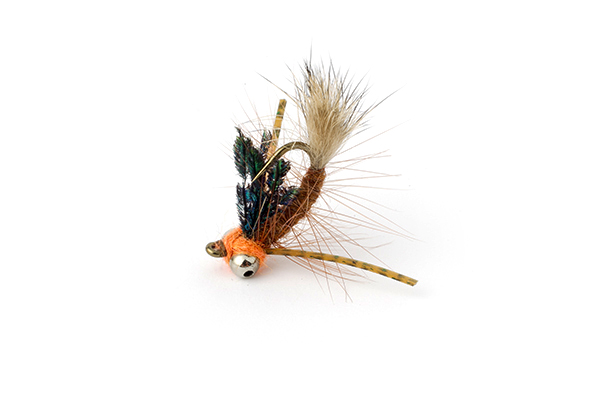
Carp Bug
The first gig at a fly shop I managed to land was in Longmont, Colorado. I was new to the state and curious how the anglers in the area went about chasing carp and how they rigged and what flies they used. Andrew Spinato, a shop customer and career fire fighter who had been chasing the local carp for some time, was tying the Carp Bug. The first day out with two of his flies I landed eight carp from six to twelve pounds.
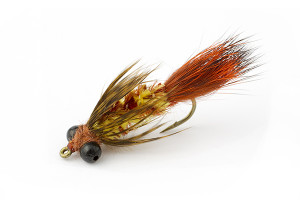
Hammerhead
I have fallen in love with the look and style of Ian Anderson's Hammerhead, but its size and weight makes it an impractical fly for the carp waters I fish in Colorado. I set out to recreate the fly as a mid-depth, still water crayfish pattern that I could use. The fly had to have lots of movement, sink fast . . . but be lightweight. Because of these limitations, I had to scale the fly down in size and replace the rabbit strips with Crawdub dubbing. I also incorporated some of my favorite Krystal Flash and Sili legs in the back to make it more realistic.
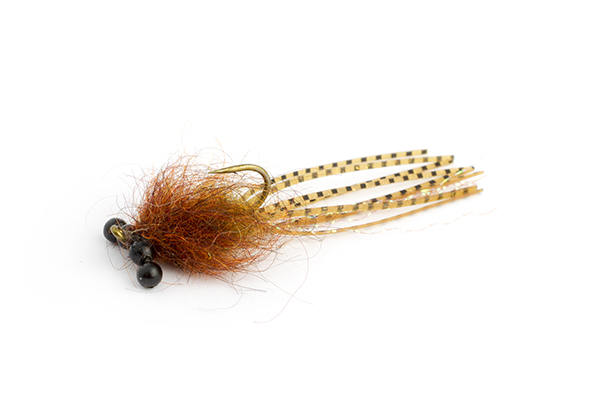
Halfback
The Swimming Halfback is a fly created by Blair Lampe. He took one of his favorite nymphs, the Halfback, and tweaked it slightly to add a bit more movement and some tiny lead eyes to add weight enough to flip the hook and make the fly ride hook point up. Blair and his brother, Brian tested and developed the fly in their dad's ponds near Fort Morgan, Colorado until it was ready for public consumption.
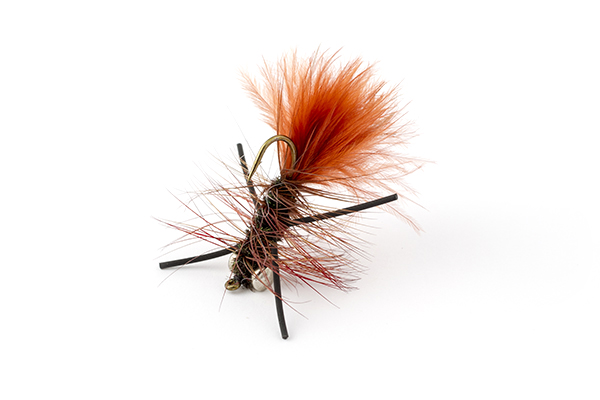
Backstabber
Over the last decade the Backstabber has been my go-to carp fly and I have used it to land thousands of fish. I have found that an olive-colored Backstabber works best for the large, spooky carp in clear, well-foliaged waters and the black-colored one is ideal for muddy water (mainly because it is easier for me to see) and the wine-colored one works best in the early season when the water is still cold. The grey minnow Backstabber is my late-season go-to, when the water levels in my local reservoirs drop low enough to pull the carp out from the food-rich cattail beds and coves and they are forced to chase shad.

Bellycrawl
Rob Kolanda created the Bellycrawl—a shrimp-like oddity that incorporates a ribbed tungsten body weight to get the fly to sink fast in current and swim hook point up. Rob used the Bellycrawl in 2008 and 2009 to help win first place back-to-back at the South Platte Pro-Am Carp Slam in Denver, Colorado.
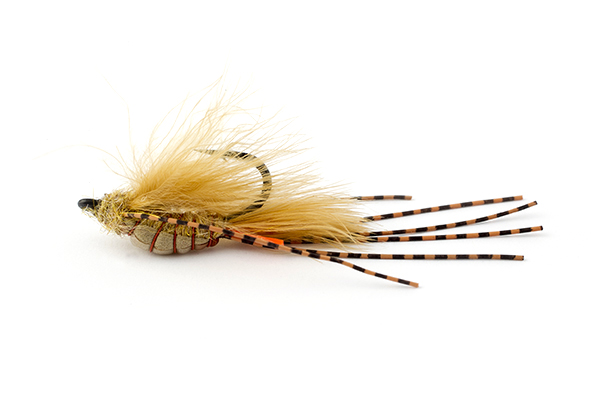
Carp Carrot
Jim Pankiewicz is from Seattle, Washington and regularly pursues the carp in the Pacific North West. Jim tied the first Carp Carrot after poking around in his mass of old flies and tying material and running across some cards of orange wool he used to use for the bodies of trout flies back in the 1970s. He combined that with dyed pheasant rump feather he already had handy from tying some of his other favorite trout flies.
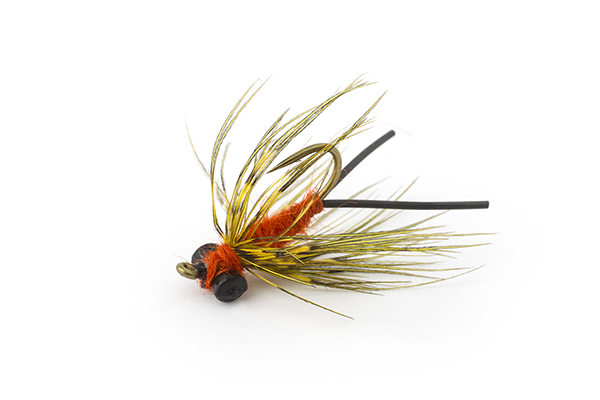
Carp Bitter
The Carp Bitter is one of Barry Reynolds earlier signature carp fly patterns. The first Carp Bitters date back to 2007 and were introduced in his DVD The Flyrodder's Guide to Carp. Barry found that the rust and olive variations were the best day in and day out. He found that the rust and orange-colored Carp Bitter worked best for the muddy water carp in his local ponds in and around Denver, Colorado. The olive version, however, became an absolute killer on the South Platte River that flows through Denver.
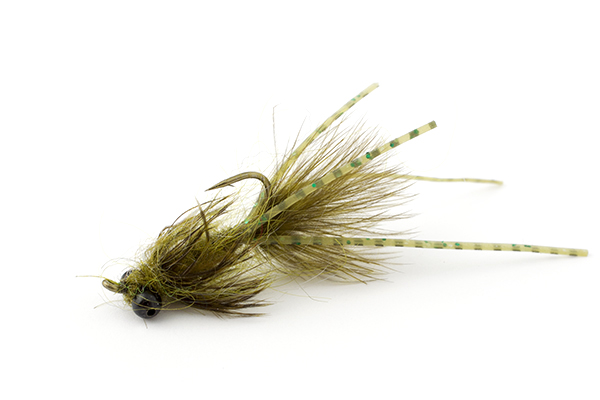
Admiral Akbar
The Admiral Akbar carp fly (deliberate misspelling) was created in 2010 by Minnesota rough fisher, Jean-Paul Lipton for the common carp, buffalo, quillback and redhorse in the Ottertail River drainage. Jean-Paul discovered the orange colored bead chain at a Hobby Lobby near his home and they put the needed finishing touch to the fly patterns he had on his tying bench Like many fly tiers who live in rural areas, or generally outside the range of well-stocked fly shops, he has made a habit of plundering yarn shops and craft stores to find ingredients.
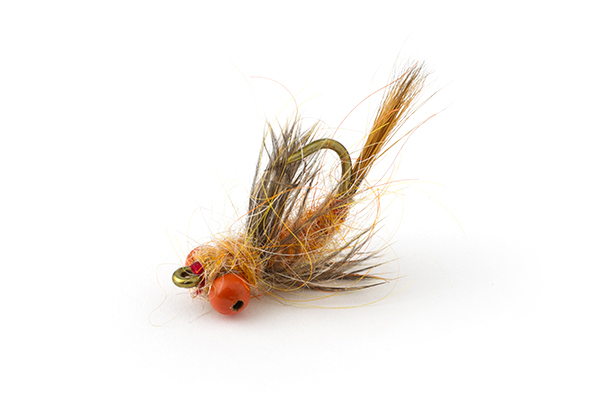
Hybrid
John Bartlett from Oregon created the Hybrid, a cross between a worm and soft hackled wet fly. The Hybrid is a carp fly designed to sink to the bottom as quickly as possible and wait there, looking subtle and inviting, until a carp moves into the vicinity and thinks it is too good to pass up. Every fly fisher in America knows about the steelhead runs that move up the Columbia River, they are the thing of legends. However, John "Montana" Bartlett, forever the cowboy, has his mind set hard on carp— carp on the fly.

Black Ops
Christopher Vargo from St. Louis, Missouri created the Black Ops carp fly for the off-color Missouri River tributaries near his home. I love simple, yet suggestive carp patterns and the Black Ops has quickly become one of my favorite patterns on the mud flats in my home state of Colorado.

Carp Breakfast
Kevin Morlock has built a solid reputation as one of the premier carp fly fishing guides on and around Lake Michigan's Beaver Island. Kevin's fly, the Carp Breakfast has quickly become one of his client's favorite flies, as well as a sure killer all around the Great Lakes region— where big, heavy patterns are necessary and effective.
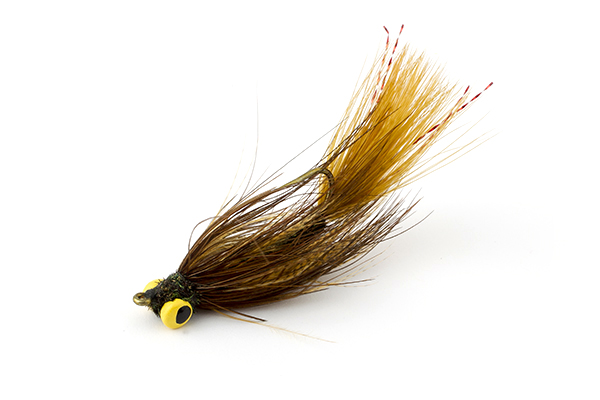
Banjowood Seed
In the heat of late spring and early summer the cottonwood trees begin dropping fluffy white seed pods that are notorious for fouling outdoor swimming pools and hanging up on the knots in a fly fisher's leader. Once these seeds find their way into the water they become easy, fresh food for carp. The cottonwood "hatch" happens every year and can go on for well over a month. I have experimented with many different materials to make the perfect cottonwood seed fly and have found the long, white shed hair that comes of my dog Banjo are better than anything.
